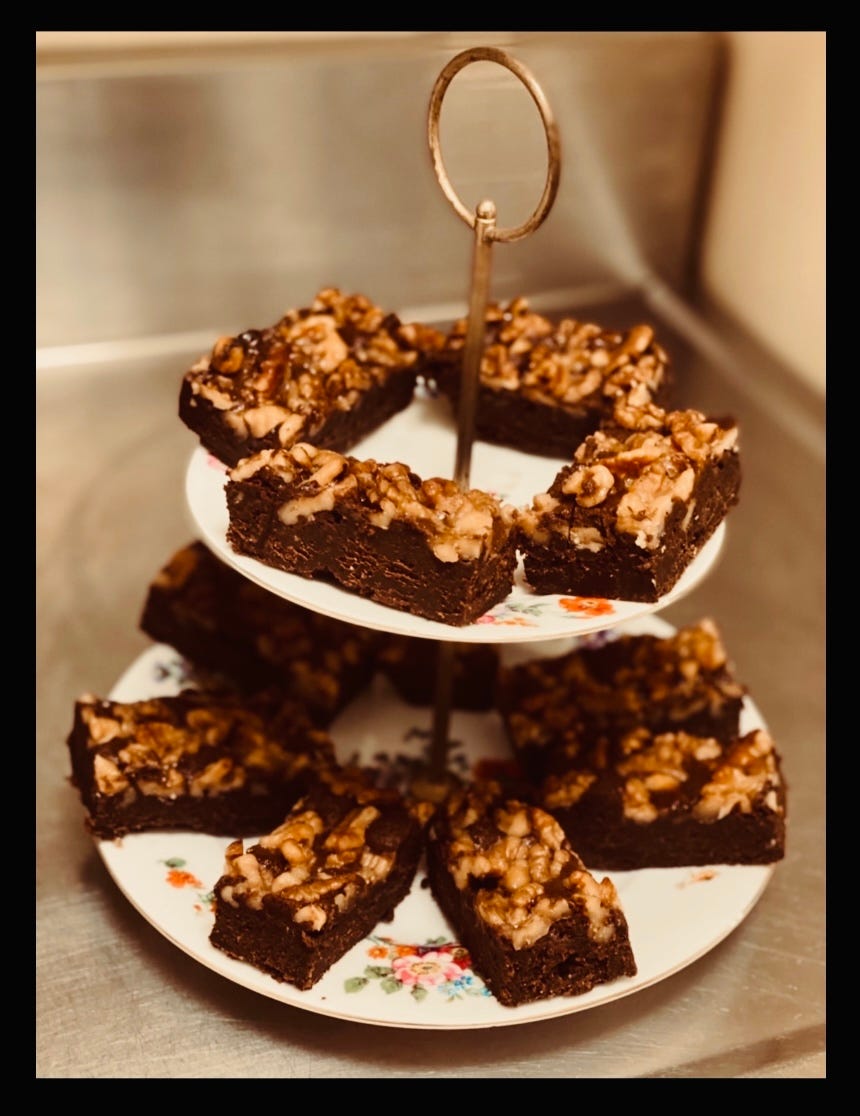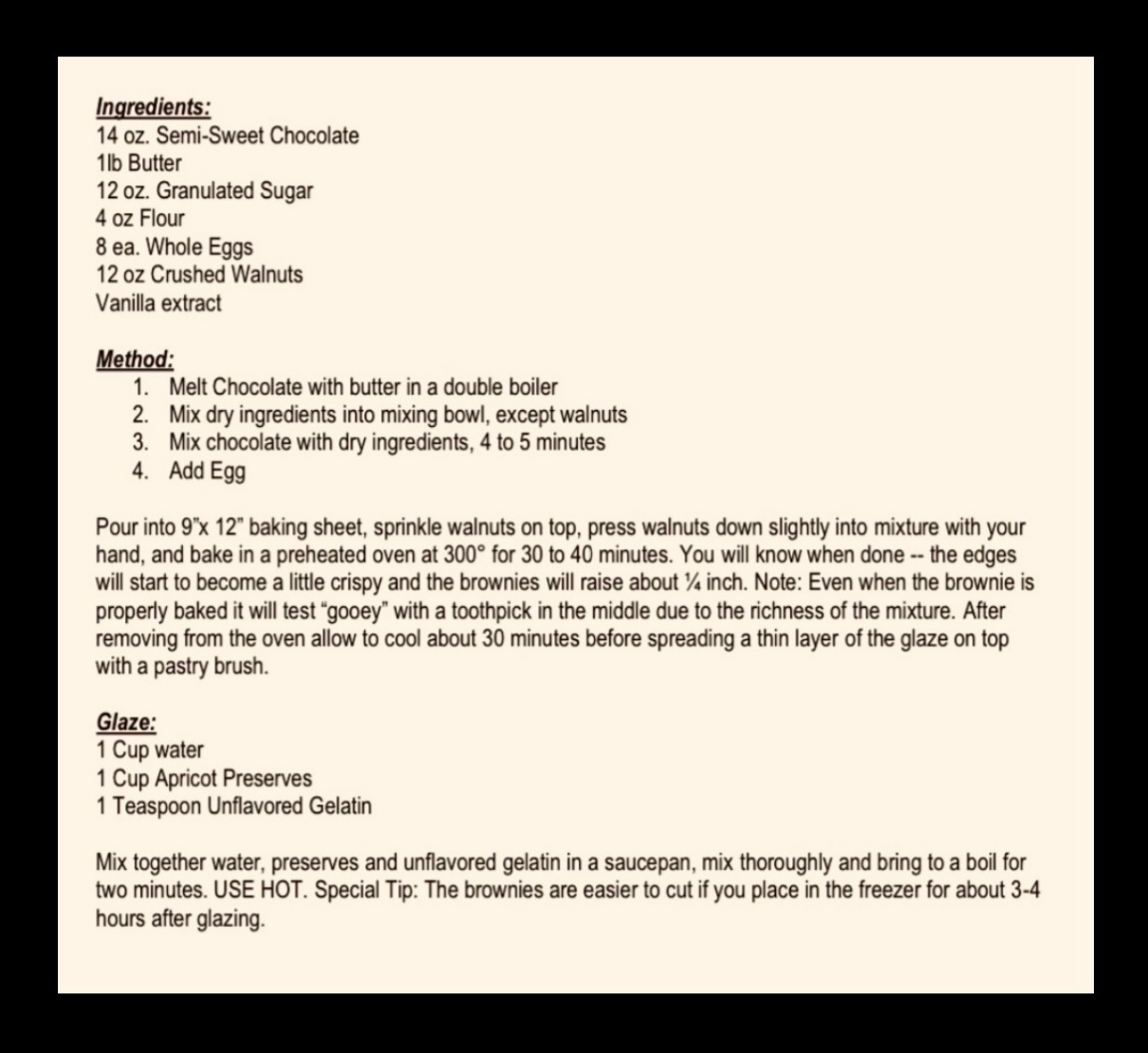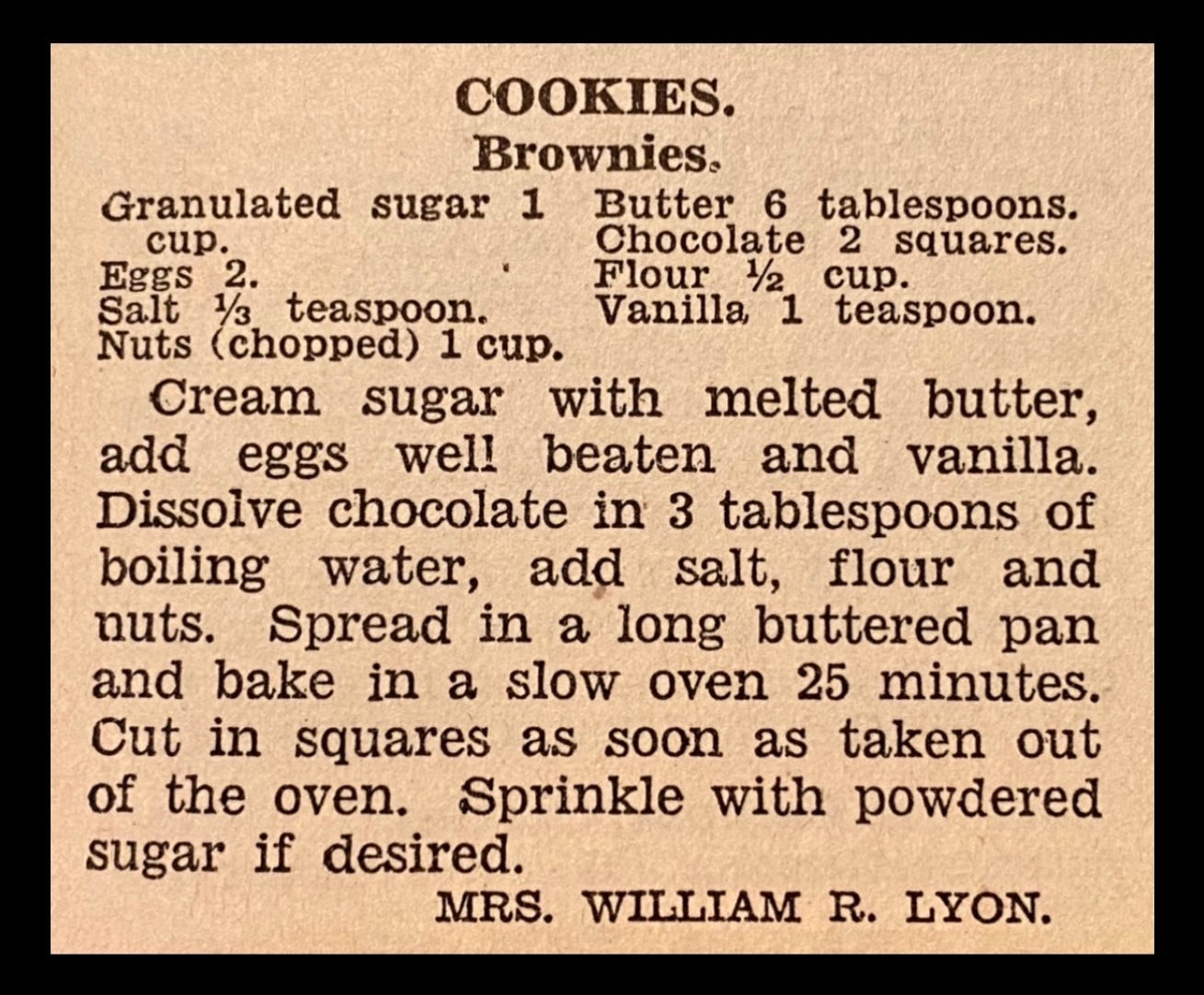What was the first thing you ever baked? I’d really like to know.
My own baking career started with Duncan Hines Brownie Mix and I remember being very pleased with myself, which of course made me want to make them regularly. I established the brownie as my ‘signature dessert’ at age 12.
The story of the brownie’s origin, like most of what I’m finding in my recipe time-travels, always include a couple of versions of what happened, and the stories are always intriguing.
In the original 1896 Fannie Farmer Cookbook, there’s a recipe called ‘Brownies’ that contains no chocolate but instead, molasses and pecans. The brownie lore also includes the ‘Bangor Brownie’ of the early 1900’s: it’s the story of a woman in Maine who forgot to add baking powder to a chocolate cake and when it didn’t rise, served it flat. A printed recipe for brownies appears in the 1898 Sears Roebuck catalog, and this is the one I want to tell you about—The Palmer House Hotel Brownie of 1893.
I love this story. It combines three of my favorite things—brownies, hotels and my adopted hometown of Chicago.
When Chicago hosted the Colombian Exposition World’s Fair of 1893, Bertha Palmer, wife of prominent businessman Potter Palmer, was the ‘President of the Board of Lady Managers’ for the Fair. She asked the chef at their hotel to create a ‘ladies’ dessert which could be added to the boxed lunches served at the Women’s Building which housed exhibits of art and culture from women around the world. It was a delicious success — much easier to package and eat than pie or a piece of cake.
I made the original Palmer House brownie recipe this week and it is, in a word, a ‘WOW!’ Rich chocolate, crunchy walnuts and glazed with apricot jam. This is what I would call a special event dessert. They are beautiful to look at and wonderful to eat, and you can time-travel back to the Palmer House kitchen and to the 1893 Fair through this recipe. It is still on the menu of The Palmer House Hilton Hotel today.
It was during the 1920’s, though, when the popularity of brownies really took hold, in large part because of the increased availability of chocolate in bar form after the First World War. Chocolate bars had been sent overseas as military rations, and now the companies that made them could turn to producing them for the home market. I’ve seen brownies referred to during this era as cookies, bars and candy. Chewy, cake-like or more like fudge, brownies became a permanent fixture in the landscape of American desserts.
I search for old cookbooks every chance I get, and I found a real gem a few weeks ago: The Chicago Daily News Cook Book, published in 1930. It’s a compilation of recipes from local readers — 20,000 of them — and it really touched me to see their recipes and read their names. I found a very different, much less costly brownie recipe, listed in the cookie section. I’m going to make it this week and tell you about it next time. But for now, I’ll simply thank Mrs. William R. Lyon of Chicago for sharing her recipe with us.
Thanks for traveling with me again and if you have a minute, leave a comment — I’d love to see what the first thing you baked was. Next week: A 1933 recipe for Banana Bread.
Here are both of the brownie recipes.
Palmer House, 1893
Mrs. Lyon of Chicago, 1930
Have a great weekend.
Jolene
Sources:
PalmerHouseHiltonHotel.com; PBS.org ‘The Palmers’/American Experience; The Original Fannie Farmer 1896 Cookbook, Ottenheimer Publishers; The Chicago Daily News Cook Book, 1930; Wikipedia; ICE.edu, ‘One History of the Brownie’; KitchenProject.com ‘The History of Brownies’; NewEnglandRecipes.com;
Photo and Baking: Jolene







Love the story here! However I would pass on the apricot jam for sure.
The first thing i cooked was a cake in my easy bake oven. Does that count?
These look AMAZING!